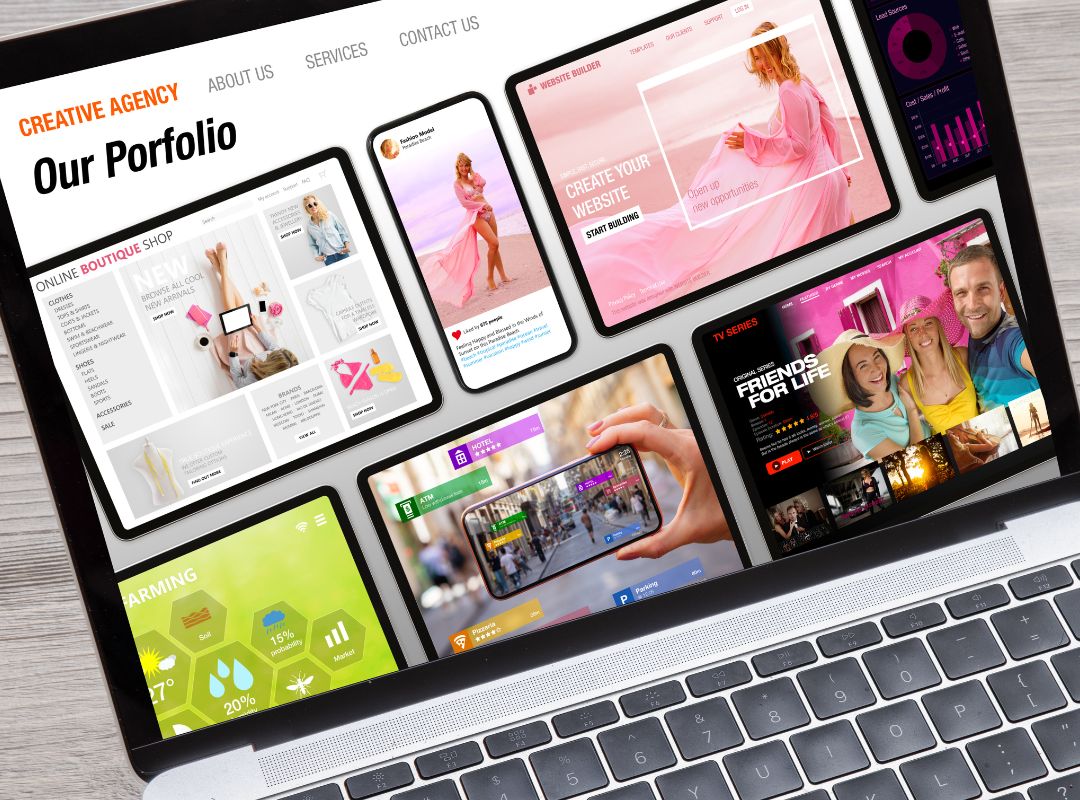Top 5 best blogging platforms for small business owners in 2023
The best blogging platforms are those that suit your business and the abilities of the team or individual who will be managing your site.
Blogging is now an essential way of creating and sharing content. They’re used by businesses, individuals, and government agencies to share information with the public.
When you type something into Google, if it’s not a retail website that comes up, it’ll most likely be a blog post that answers your search query.
Consumers themselves say that blog posts are valued in the early stages of the buying process (Demand Gen Report 2019). Six out of ten say reading a blog post is valuable to them well before making a purchase.
Knowing the importance of blogging for business in 2023, you may have decided you want to start doing so yourself.
There are many different blogging platforms available online, each with its own strengths and weaknesses. Choosing the right one for your needs can be a difficult task. This post will help you understand the different types of blogging platforms available and how to choose which one is best for you.
We’ll be comparing five popular blogging platforms to help you choose.
1. WordPress
2. Wix
3. Weebly
4. Squarespace
5. Hubspot
Know what you need before you begin
Before you choose a platform, understanding where you’re at on your blogging journey, and who you’re blogging for, is helpful.
Have you ever blogged before? Are you familiar with SEO? Do you have practice in creating website?
Don’t worry, you don’t need any of this experience. But if not, it’s helpful to choose a platform that can help you step by step and doesn’t require any coding knowledge.
Next, you’ll want to think about the future. It’s important to consider what features you need before deciding which platform is best for your needs.
As your audience grows, will you want to add more features to your blog? You might want change the look of your website to suit your readers’ developing needs and expectations.
Making sure you’ve chosen the right platform for the vision of your business from the get go is important. It can be a big and complex job to switch platforms at a later stage.
1. WordPress
WordPress is a free and open-source content management system (CMS). The platform is used by over 70 million websites worldwide and hosts more than 60 million websites.
Pros:
Easy to set up. WordPress is very easy to install and configure, as it comes with an automated installer that can be used to set up your first blog in minutes.
Free to use. WordPress does not charge for its software or hosting services, so you can start blogging for free right away — though some premium features may require payment.
It has an easy-to-use SEO plugin called Yoast that makes it easy to optimise your posts for search results.
Flexible design options. WordPress offers a wide range of themes and plugins (small pieces of code) that allow you to customise your site’s design without having to write any code yourself. You can find thousands of free themes on WordPress’ official Themes Directory website, as well as many premium ones that cost money but offer additional features like custom designs or advanced functionality.
Help is on the way. It has a lot of support including forums where people can ask questions about any problems they might be having with their sites or how best to use specific plugins etc., tutorials on how to do anything from setting up your first blog post.
Cons:
WordPress can be very complicated if you don’t need all the bells and whistles.
There are costs associated with using WordPress and maintaining your site once you’ve got it up and running. These include:
Hosting fees: You’ll need to pay a hosting company to host your website on their servers, but even if you host your own site, you’ll still need to pay for server space.
SSL certificates: If you want an HTTPS connection (which is recommended), then you’ll have to purchase an SSL certificate from a third-party provider before adding HTTPS support to your WordPress website. This costs about $100 per year at time of writing and will allow visitors to see that they’re connected securely with your website (and this helps boost trust).
2. Wix
Wix is a website builder that offers a free plan and premium plans that start at £4 per month. The platform has been around since 2006, and it’s used by millions of people every month. If you’re looking for an easy way to get started with blogging, this could be a good option for you.
Pros:
The editor comes with plenty of templates that you can use as starting points for your site design and content creation efforts. If you’d rather start from scratch and build your own template, there are tons of options available in the editor’s gallery so you don’t have to settle for something that doesn’t meet your needs exactly.
Wix also allows users to create their own custom designs from scratch using HTML and CSS code.
It also offers good SEO options, including meta tags and social media integration. You can easily add affiliate links, which means you’ll get paid every time someone buys something after clicking on one of your links.
Wix also has some useful features that make it easier for search engines to crawl through your site and understand what it’s about — like breadcrumbs and internal links that help people navigate between pages on your site.
Cons:
If you want to sell things on your site, ecommerce options are for paid plans only. And, even when you do pay, the options are limited compared to others.
While premium and business plans offer more storage and advanced tools, the free plan is limited. Choosing the free plan will display Wix’s branding and display ads on your blog.
While the templates are great for customisation, once you’ve selected one, there is no going back.
3. Weebly
Weebly is a great option for any business owner looking to create a blog that they can easily update and manage themselves.
Pros:
Weebly offers a free plan so you can build your blog without having to pay anything upfront.
It’s easy to use, so you don’t need any technical knowledge or skills. Weebly makes t easy for anyone to create their own website without being an expert in HTML or CSS coding languages. It’s simple enough that even someone who isn’t familiar with websites could easily learn how to use it in no time at all.
You can create multiple pages, add images and videos, along with other multimedia content. There are also many different templates to choose from when you’re building your site.
You can add social media sharing buttons and other features, such as contact forms and shopping carts.
Cons:
You’ll need to upgrade if you want additional features such as SSL certificates or domain name registration support.
One of the drawbacks of using Weebly is that there’s not much customisation available for your website once it’s been created. You’re limited to changing text colours, fonts and layout options such as adding headers, footers and sidebars.
It’s not easy to change the domain name or URL of your site if you decide that you want something different from what Weebly offers (although this is possible).
4. Squarespace
Squarespace was founded in 2003 and now has a team of 1,640 employees. Millions of websites have been created using Squarespace. It’s aimed at small business owners and solopreneurs.
Pros:
If you want to set up a website, you can do it in less than an hour with this platform. And if you’re not that technical, you can even get help from one of their expert partners.
It offers a lot of features, including a drag and drop page builder, templates and hosting. Uploading pictures, adding text and setting up your site is as simple as clicking on buttons or dragging and dropping images into place.
It features a security component that helps businesses minimise risk by controlling access to software and data.
It’s affordable. There are no hidden fees or contracts — just pay once and enjoy all the benefits.
It’s great for eCommerce. Lots of options for selling products and services are available.
Squarespace offers amazing support from real people who know what they’re doing and are available 24/7. And they also have a community forum where users can ask questions or offer advice on how they did something specific on their site or with their blog.
Cons:
No free plans are available. But there is a 14-day trial.
While the drag and drop editor is easy to use, Squarespace requires a little more computer literacy skills and some experience in using website builders before.
A general lack of marketing tools holds you back slightly. The ability to improve your SEO leaves a bit to be desired.
There’s not much going on in terms of SEO. Users can do little in the way to market their blog using the SEO tools available on Squarespace.
5. HubSpot
HubSpot is a popular marketing automation platform that also has a blogging tool called HubSpot Blogs. The company has created an ecosystem uniting software, education and community.
Pros:
HubSpot offers a number of features that are useful for blogging, including an analytics dashboard, customisable templates, email marketing tools and social media management tools.
It has powerful features that can be used for marketing, CRM and sales automation.
Loading times are super quick with HubSpot. Blogs are hosted on HubSpot’s own server, which means users of your site will benefit from a quick and secure interface.
HubSpot has lots of reporting and analytics benefits. You can easily manage SEO based activity, inbound campaigns, plan future campaigns, and review which blog posts are performing.
It’s great for blogging for SEO. HubSpot’s features allow you to optimise your posts to gain the most traction on Google.
You can create multiple blogs with different themes so that you can publish different types of content on each blog.
Cons:
The biggest drawback of HubSpot is its price tag. The cost of using HubSpot is expensive if you don’t have a large budget for marketing. If you don’t have budget for the paid version of HubSpot, this might not be for you.
Plugins aren’t as plentiful compared to other platforms so there may not be certain types of customisation available that you require.
You might need to hire a developer to customise a HubSpot blog for your business needs. It’s not easy to use if you’re not technical or don’t have someone in your team who can help you out as can require some coding knowledge.
While there is a way to get started for free, there are no free plans available.
In Conclusion
Overall, out of these top 5 best blogging platforms, we think WordPress and Wix offer a wide range of services that cater to beginners and slightly more advanced users. But that’s not to say the others aren’t great too.
Ultimately, it’s about sitting down with your business plan and marketing plan and deciding what you want your blog to achieve. From there, researching the features of each platform will help you to make the decision.





